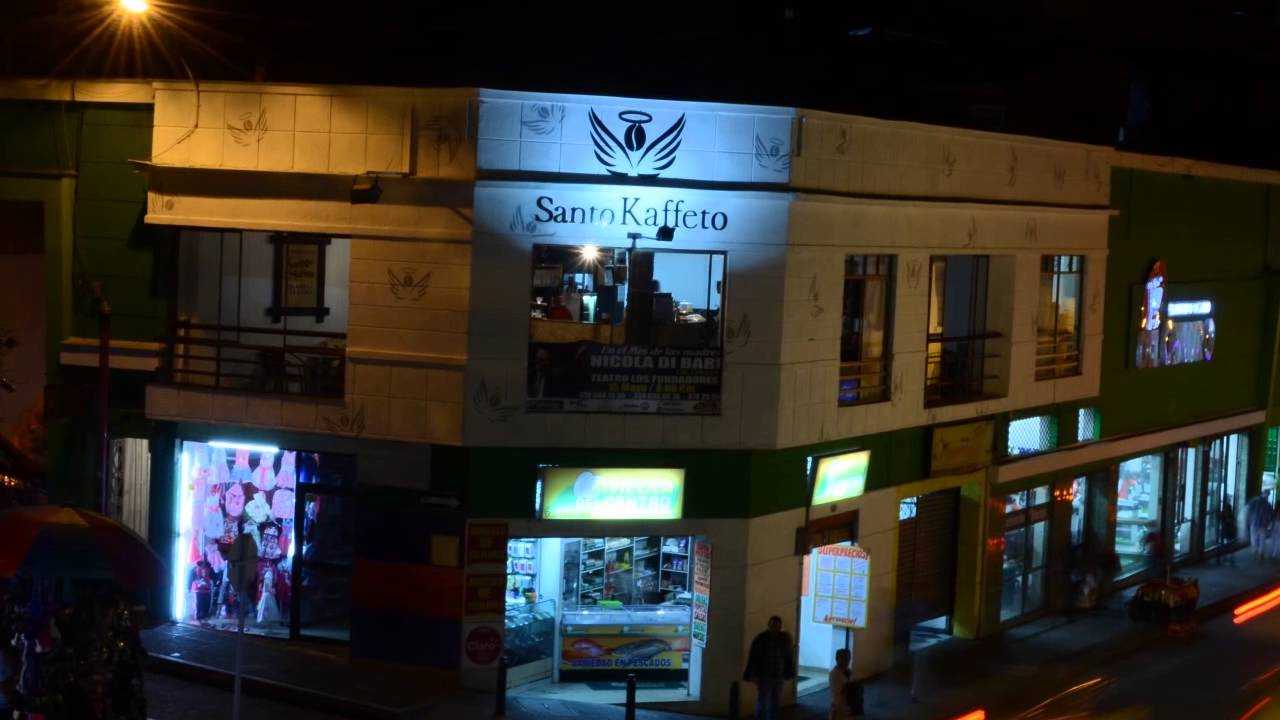MANIZALES, Colombia – Colombian coffee is known the world over as one of the highest-quality and widely available varieties. According to the International Coffee Organization, only two countries — Brazil and Vietnam — produce more, and Colombia has the prestigious distinction of only cultivating top-tier Arabica beans while those growing more both produce a large volume of low-quality Robusta varieties.
Nowhere in Colombia is more famous for producing the delicious beverage than the Eje Cafetero, known in English as the Coffee Belt or Coffee Triangle. Located in the center of the country and surrounding the middle range of the Andes mountains, the three most iconic coffee cities are Manizales, Armenia, and Pereira.
Manizales, the capital of the department of Caldas, is the largest of the three and Finance Colombia Executive Editor Loren Moss recently took a trip there to learn more about the current state of the coffee business.
He ventured into the city’s Chipre neighborhood to sit down with Andres Restrepo of the fine café Santo Kaffeto and discuss what makes this area so special.
Finance Colombia: So, thank you for inviting me to Santo Kaffeto, your café in the Chipre neighborhood in Manizales. You the owner, correct?
Andres Restrepo: Yes, yes. With two partners from Santo Kaffeto, an estate where we are dedicated to cultivating coffee. We are here to tell you a little about the raw materials, the processes, the drinks, so that you can get to know a bit more about the world of coffee.
Finance Colombia: Excellent. Why does this region, the Colombian Coffee Belt, have so much success? Coffee is grown in many parts of the world — in Africa, in Vietnam, in Brazil — but why has this area achieved such fame?
Andres Restrepo: I think it’s due to the climate, the mountains, the people and their habits. I think all of that taken together makes us a different region.
Finance Colombia: The whole country of Colombia has a worldwide reputation for its 100% Arabica, high-quality coffee. But one thing that was surprising to me when I first arrived is that the coffee culture within the country is still being developed, even though the product is being exported all over the world.
Here in Manizales, where we are, this is known as the Coffee Belt, but it seems to me that there a very few Colombians who take the time to savor their coffee as one of the finer things in life and not just something that you offer to you neighbors.
Andres Restrepo: Well, previously we just dedicated ourselves to exporting the green beans, and we knew very little about the processes. We just produced. The cooperatives began to separate the beans, and they left the low-end, raw materials for local consumption. The good part was all for export.
Now, times have changed. Good coffee is in style. We Colombians also have a right to drink quality coffee, so baristas appear, who are experts in preparing the beverage, and toasters to properly roast the high-end beans for the best taste.
We are putting this whole group of people in charge of showing local people and foreigners that coffee is a science with a whole world behind it: you have to take into account the variety, the processing, the toasting, the preparation. All the steps are exact so that the beverage will be good.
When any aspect of producing the variety or the cultivation process fails, the cup of coffee will be affected. So we’re beginning to bring together all the right processes — each one in the chain — so that the development of the beverage will be good.
Finance Colombia: How can a traveler visiting the Coffee Belt and Manizales for the first time get to know about the high-quality coffees of the region? If I go to France or Chile, I can see some vineyards to find out about the wine. In the Coffee Belt, how can someone start to learn about the special, unique “coffees of origin” from here?
Andres Restrepo: First, there are some estates that show people about production, beginning from the sowing process. They take foreigners to coffee plantations and teach them to pick coffee, to process it, and to prepare it. They’re using their very own coffee to make it on the farm.
That’s the beginning. Then the coffee shops come in. Visiting the countries top cafés is where you can go inside and handle the coffee beans of different qualities, of different varieties, of different roasts.
Finance Colombia: And what is the government doing? I know that the National Federation of Coffee Growers of Colombia is a main resource, but how do others help to develop the brands of coffee, how to sow and cultivate, and how take care of their plants? Or, for farmers that don’t have any experience in how to export, how do they help them participate in the globalized market and sell his coffee in the world?
Andres Restrepo: There are a lot of companies specializing in this by giving a seal of approval, which backs up the denomination of origin of special coffee. A seal of good practices. There’s one called the Rainforest Alliance that specializes in going out to certify and give direct help to everyone from the coffee grower to the foreign purchaser, the toaster. They take away the middle men and the much higher prices to the purchaser.
But, always, the National Federation of Coffee Growers must be present. They are the ones that ensure that the coffee that leaves here complies with certain quality standards in taste, size, and being free of defects. So the federation always appears in the middle, guaranteeing the purchaser that what he is getting is of good quality, thereby taking care of the name of Colombian coffee in the eyes of the world.
Loren Moss


















